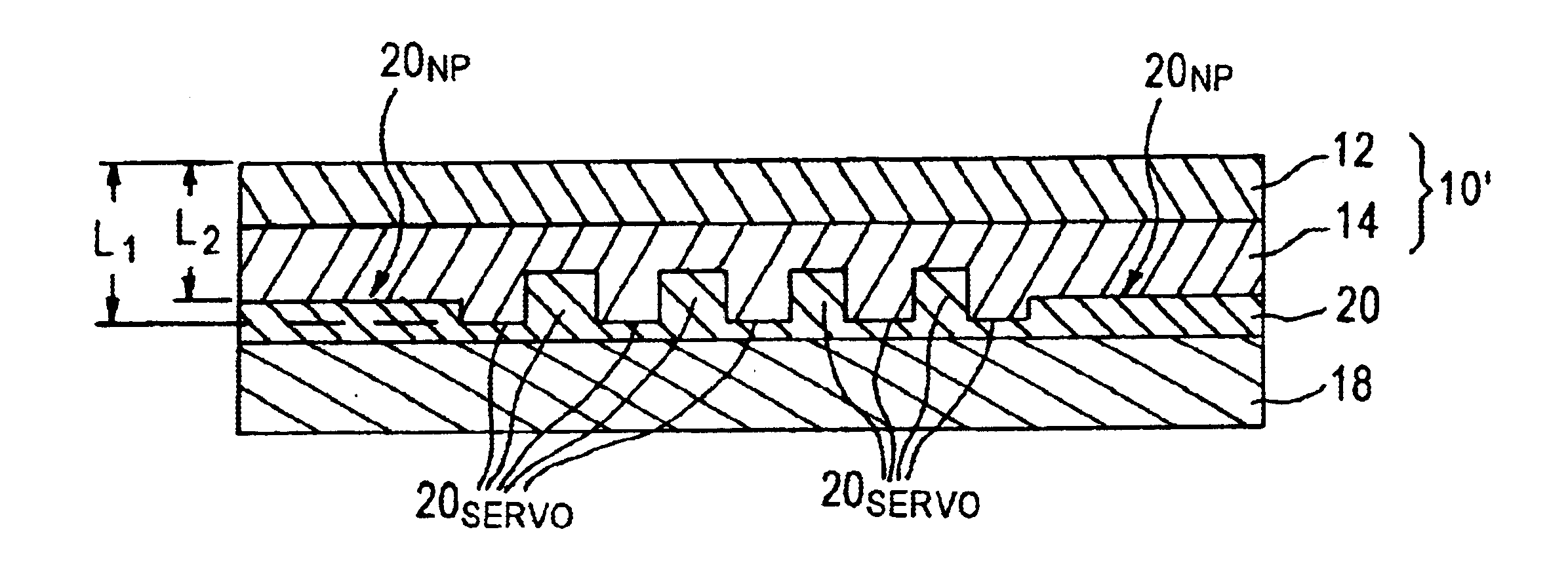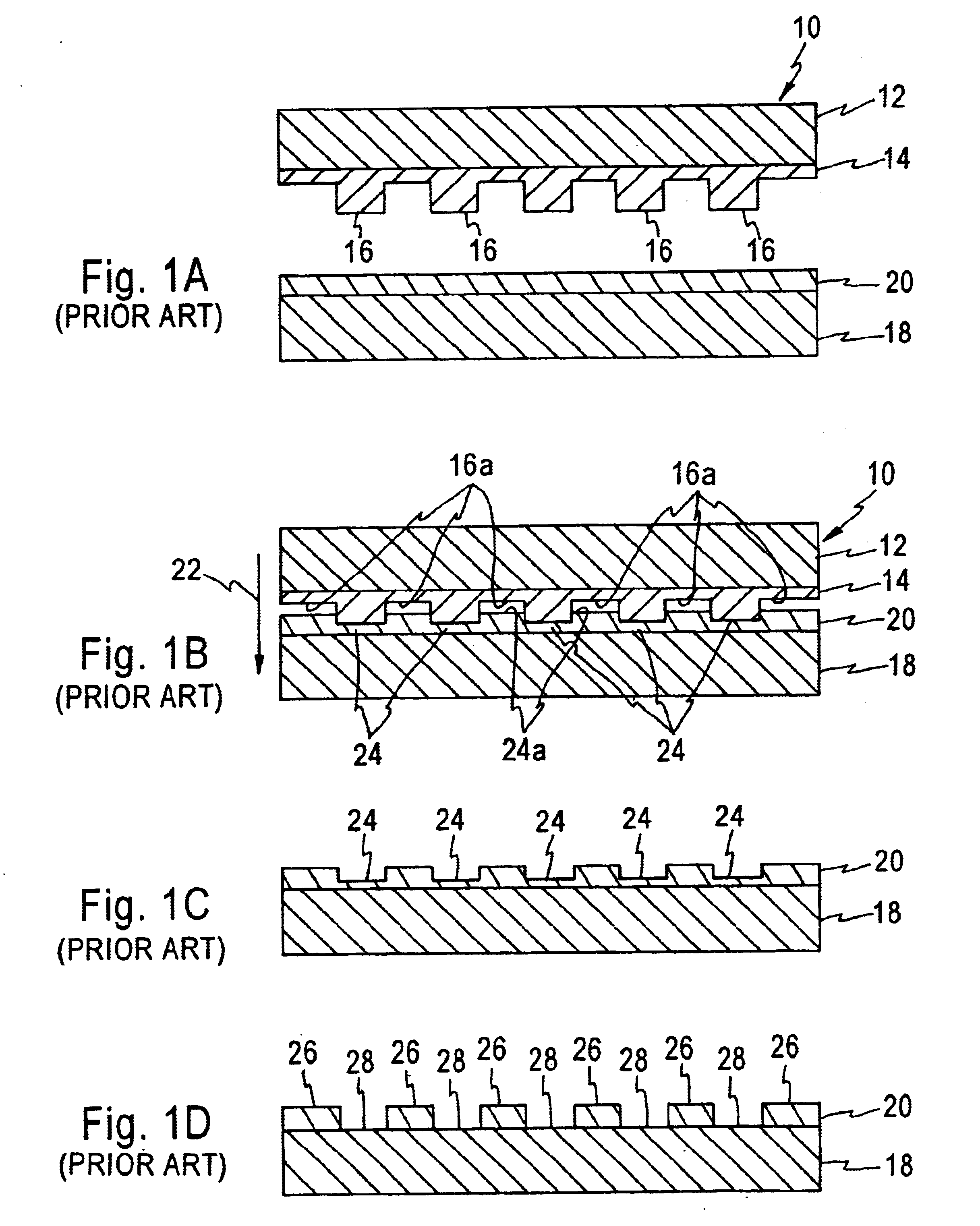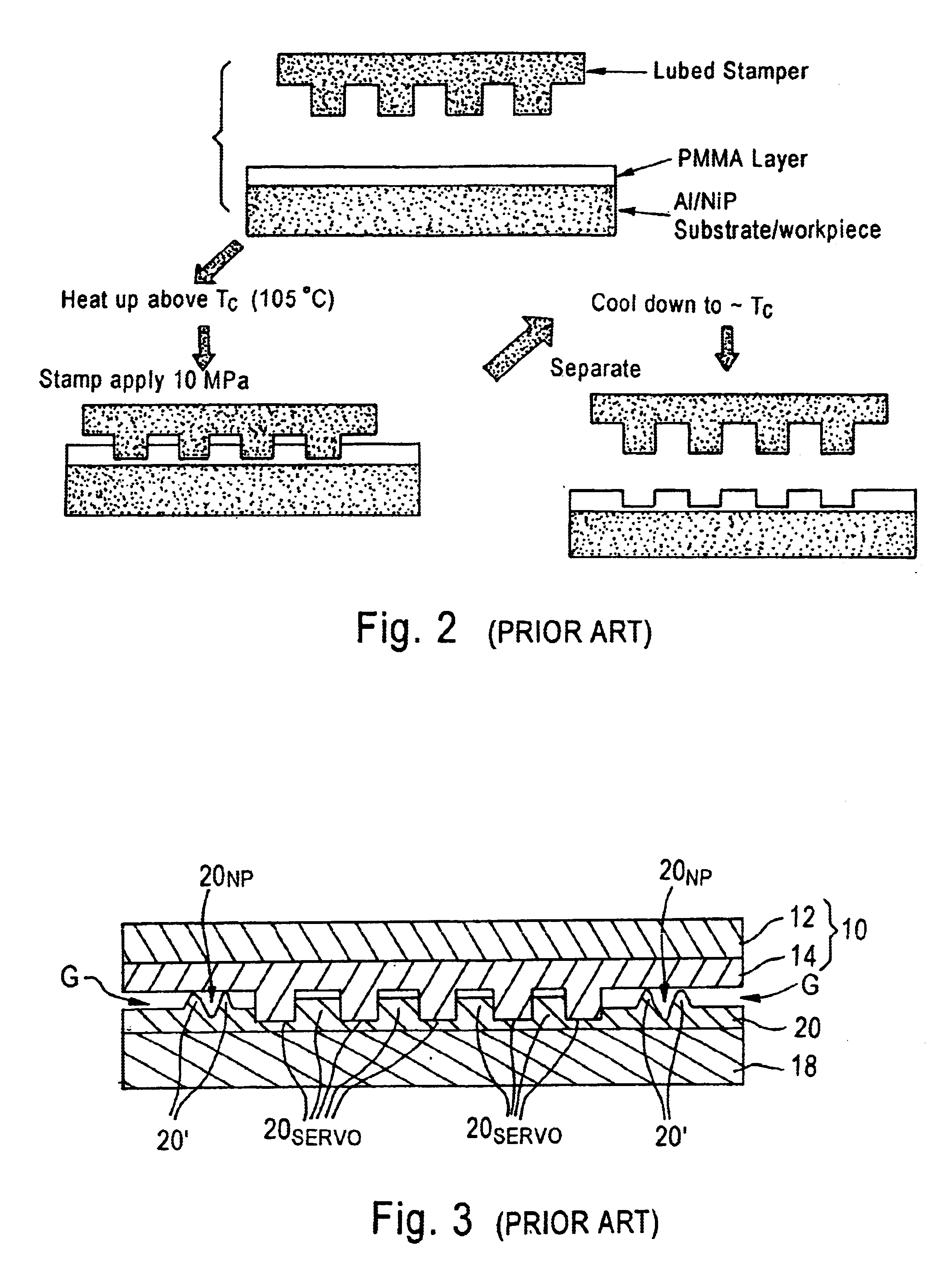Multi-level stamper for improved thermal imprint lithography
- Summary
- Abstract
- Description
- Claims
- Application Information
AI Technical Summary
Benefits of technology
Problems solved by technology
Method used
Image
Examples
example
Shallow-grooved, multilevel stampers / imprinters 10″ as shown in FIG. 5 were fabricated by means of a laser beam exposure apparatus and Ni electroplating. The shallow grooves 20SG were patterned on a photoresist layer using a lower exposure dose than that used for patterning the full height (or depth) features 20SERVO of the servo pattern portion of the imprinting surface. Ni was electroplated on the patterned photoresist to replicate the resist pattern. Several generations of stampers / imprinters 10″ were fabricated by successive electroplating of the patterned photoresist. Servo patterns were stamped / imprinted onto PMMA-coated, Al disk substrates at about 140° C. and released therefrom at about 120° C. Excellent replication fidelity was obtained, as determined by scanning probe AFM measurements. Further, the excellent replication fidelity was obtained despite the use of the Ni-based stampers / imprinters 10″, which have a different thermal expansion characteristic than that of the Al ...
PUM
| Property | Measurement | Unit |
|---|---|---|
| Temperature | aaaaa | aaaaa |
| Level | aaaaa | aaaaa |
Abstract
Description
Claims
Application Information
 Login to View More
Login to View More - R&D
- Intellectual Property
- Life Sciences
- Materials
- Tech Scout
- Unparalleled Data Quality
- Higher Quality Content
- 60% Fewer Hallucinations
Browse by: Latest US Patents, China's latest patents, Technical Efficacy Thesaurus, Application Domain, Technology Topic, Popular Technical Reports.
© 2025 PatSnap. All rights reserved.Legal|Privacy policy|Modern Slavery Act Transparency Statement|Sitemap|About US| Contact US: help@patsnap.com



